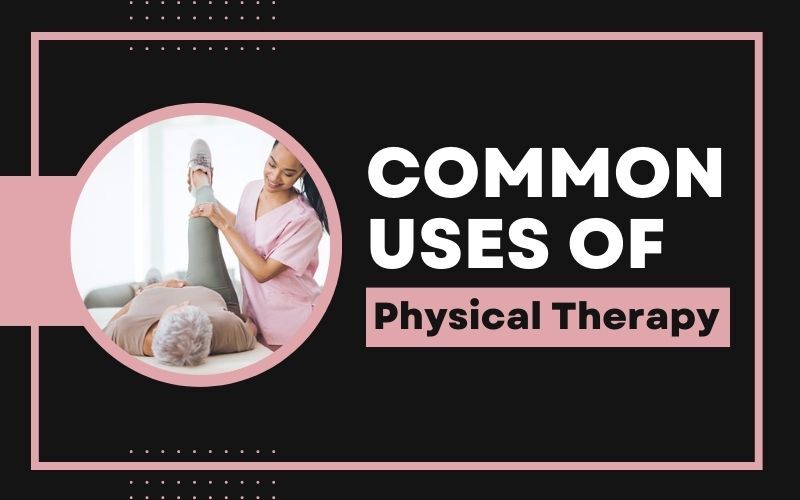Physical therapists (PTs) and occupational therapists (OTs) treat people across their lifespans to restore mobility, strength, function, and quality of life. They work in various settings, including outpatient clinics, hospitals, rehab centers, nursing homes, schools, sports and fitness facilities, and patients’ homes.
They also specialize in helping individuals improve their balance and prevent falls, reduce dizziness, manage age-related issues like arthritis or osteoporosis, and regain strength after joint replacement surgery.
Pain management
Pain management is an everyday use that many services offer, like MSK physical therapy for many patients, and it’s a crucial topic with the looming opioid crisis. However, it’sIt’s essential to note that while the medication is often effective for pain relief, it can also have adverse side effects.
Your physical therapist will use various techniques to help reduce your pain, including sensory re-education, electrical stimulation, ultrasound, and massage. These methods may target the cause of your pain, or they can improve your overall function.
Physical therapists can also teach you to exercise correctly, which will help keep you healthy and prevent flare-ups of pain. In addition, research shows that continuous movement reduces chronic pain more than rest.
For example, if you’re experiencing back pain, your physical therapist may perform exercises that target the core muscles and improve posture. They may also offer deep tissue massage, which can reduce muscle tension and help relieve pain.
You’ll be asked to complete a questionnaire outlining your pain and how it affects your life. It can give your therapist a good idea of what might be causing the pain and what you’ve tried to help alleviate it in the past.
Physical therapists are responsible for providing contemporary education about pain, encouraging early engagement in appropriate evidence-based active pain-management strategies, and supporting people in developing self-management skills. This involves understanding the multidimensional nature of pain, recognizing the complex factors that underpin each individual’s experience, and helping them to become more engaged in care.
Mobility improvement
Physical therapists often work with people to improve mobility and increase their range of motion. They can also help prevent or treat conditions that reduce or impair a person’s ability to move and function, such as arthritis.
When someone’s mobility is limited, it can lead to pain, stiffness, and difficulty performing daily tasks. For example, poor knee mobility can affect a person’s ability to walk and play sports or other activities.
A PT may prescribe exercises and modalities to help increase joint range of motion and enhance muscle strength. They might also use heat therapy (e.g., warm baths, mud packs, or heating lamps) and cold therapy (e.g., cold packs or ultrasounds).
Controlled Articular Rotations are one of the essential foundational movements for mobility improvement. These movements aim to create a complete, controlled, pain-free range of motion in the joint capsule and strengthen mind-body awareness.
Many PTs also incorporate mobility training into their workout routines, which can mitigate injury, prevent joint pain and build stronger, resilient joints. It’s a vital part of CrossFit and old-school lifting alike.
A physical therapist might work with you on a plan of care to improve your mobility, including strengthening exercises, stretches, and various modalities like heat therapy or cold therapy. They might also give you tips and techniques to maintain mobility after your treatment ends.
Surgery avoidance
Surgery is a standard option for many people, but physical therapy can often help prevent it. By strengthening muscles and boosting flexibility, patients may be able to avoid joint replacements and other major surgeries.
This is a significant benefit for those who have suffered long-term injuries, as it can help them return to their previous level of function quickly. In addition, by using a variety of hands-on manual techniques, cold and heat treatments, or exercise, therapists can often reduce pain and restore standard movement patterns before surgery is necessary.
Pre-hab is a unique program of exercise therapies designed to increase the range of motion and movement patterns before and after an operation. It also helps patients improve their strength, allowing them a less painful recovery period.
One of the most compelling reasons to undergo physical therapy before surgery is that it can prevent many complications during and after the procedure. These can range from recurrent pain to muscle and bone strength loss.
This is an issue that physical therapists are experts at since they know how to spot movement problems and treat them. They can identify the underlying cause of these problems before they become severe enough to require surgery, which can prevent unnecessary and costly procedures.
Prevention
Prevention is an everyday use of physical therapy that helps patients avoid injury and illness. For example, you may need preventive PT to prepare your body for a new exercise routine, improve your posture, or prevent pain from running or hiking.
There are many different kinds of preventive services. Still, they usually involve strategies to decrease a risk factor for a disease or condition (primary prevention), increase a protective factor (secondary prevention) or reduce the impact of an existing illness or illness (tertiary prevention).
Understanding your medical history and symptoms is essential to determine what kind of preventative therapy is right for you. In addition, this information can help a physical therapist assess your most effective treatment.
A physical therapist will work with you to increase your strength and endurance, which can also help prevent further injury. They will design a program that includes hands-on muscle stretching techniques, targeted exercise using body weight and manual resistance, and specialized strengthening equipment.
Your therapist can also perform a variety of other physical therapy treatments to help you with your health. For example, they might use ultrasound and electrical stimulation to help decrease pain around injured areas.
A physical therapist can also help you prevent falls by improving your balance and coordination. They will assess your fall risk and provide exercises that simulate real-life situations to challenge your balance. They can also perform specific maneuvers to restore your vestibular system’s proper functioning and reduce or eliminate dizziness and vertigo.




